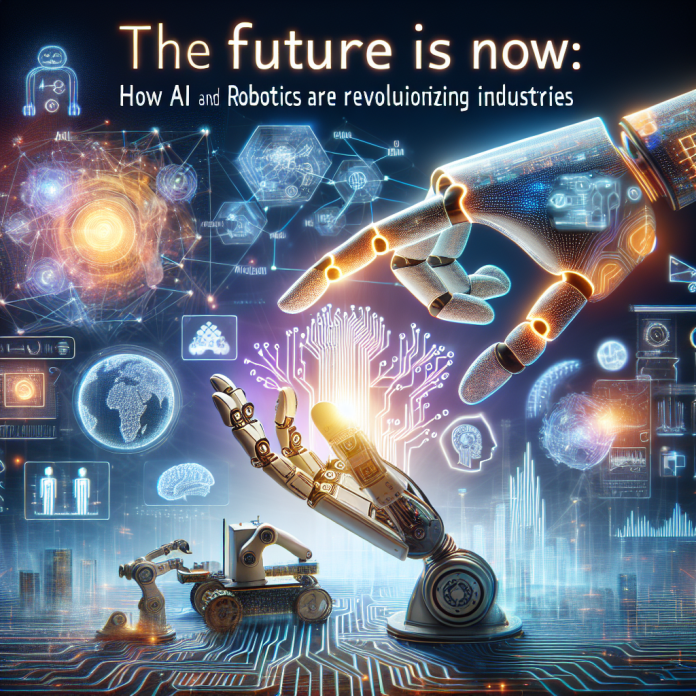Artificial intelligence (AI) and robotics have long been perceived as two separate entities in the realm of technology. AI is the ability of a machine to simulate human intelligence, while robotics involves the design and construction of robots to perform tasks autonomously. However, in recent years, the relationship between AI and robotics has evolved into a synergistic partnership that is revolutionizing industries and shaping the future of technology.
## The Evolution of AI and Robotics
The intersection of AI and robotics can be traced back to the early 20th century when automated machines were first introduced. The industrial revolution paved the way for the integration of robotics in manufacturing, leading to the development of automated assembly lines. However, these early robots were limited in their capabilities and relied on preset instructions to perform tasks.
It was not until the rise of AI in the 1950s that robots began to exhibit more intelligent behaviors. AI algorithms allowed robots to adapt to changing environments, learn from their experiences, and make decisions in real-time. This marked the beginning of a new era in robotics, where machines could perceive, reason, and act like humans.
## The Synergy Between AI and Robotics
The synergy between AI and robotics lies in the ability of AI to enhance the capabilities of robots and enable them to perform complex tasks with precision and efficiency. AI algorithms, such as machine learning and deep learning, have enabled robots to analyze vast amounts of data, recognize patterns, and make predictions in real-time.
For example, in the field of healthcare, AI-powered robots are being used to assist surgeons in performing delicate surgeries with greater accuracy. These robots can analyze medical images, such as CT scans and MRIs, in real-time and provide real-time feedback to the surgeon during the procedure. This not only enhances the surgeon’s capabilities but also reduces the risk of human error.
## Real-Life Examples of AI-Robotics Integration
One of the most famous examples of AI-robotics integration is the development of self-driving cars. Companies like Tesla, Google, and Uber have been at the forefront of developing autonomous vehicles that utilize AI algorithms to navigate through traffic, interpret road signs, and avoid obstacles. These self-driving cars are equipped with sensors, cameras, and GPS systems that allow them to perceive their environment and make decisions in real-time.
Another example is the use of AI-powered robots in warehouses and logistics centers. Companies like Amazon and Alibaba have deployed robots that can pick, pack, and ship orders with minimal human intervention. These robots are equipped with AI algorithms that enable them to optimize the transportation routes, predict demand patterns, and manage inventory efficiently.
## The Future of AI and Robotics
The synergy between AI and robotics is expected to have a profound impact on various industries in the future. From healthcare and agriculture to manufacturing and transportation, AI-powered robots are poised to revolutionize the way we work and live.
In the field of agriculture, AI-powered robots are being developed to autonomously plant seeds, monitor crop health, and harvest crops. These robots can analyze soil conditions, weather patterns, and pest infestations to optimize crop yield and reduce the need for manual labor.
In the manufacturing sector, AI-powered robots are transforming traditional factories into smart factories. These robots can work alongside human workers to assemble products, monitor quality control, and maintain machinery. By integrating AI algorithms, robotics can improve productivity, reduce production costs, and enhance the overall efficiency of manufacturing processes.
## Conclusion
The synergistic relationship between AI and robotics is reshaping the future of technology and creating new possibilities for innovation. By harnessing the power of AI algorithms, robots are becoming smarter, more autonomous, and more adaptable to complex tasks.
As we continue to push the boundaries of AI and robotics, we can expect to see unprecedented advancements in various industries. From healthcare and agriculture to manufacturing and transportation, the integration of AI and robotics holds the key to unlocking new opportunities for growth and development.
In conclusion, the partnership between AI and robotics is not just a technological trend but a transformative force that is propelling us into a new era of innovation and progress. As we embrace the potential of AI-powered robots, we are redefining what is possible and shaping the future of technology in ways we never imagined.

